Ben Plowden has joined Campaign for Better Transport on the cusp of the greatest changes on the railway since the mid-1990s. And he is optimistic about their potential - providing we get the architecture right.
“Track and train coming together is critical in delivering benefits and savings. But equally important is working back from the societal outcomes you want the transport system to support - economic productivity, decarbonisation, improving people’s life chances in left-behind communities,” he tells RAIL.
Ben Plowden has joined Campaign for Better Transport on the cusp of the greatest changes on the railway since the mid-1990s. And he is optimistic about their potential - providing we get the architecture right.
“Track and train coming together is critical in delivering benefits and savings. But equally important is working back from the societal outcomes you want the transport system to support - economic productivity, decarbonisation, improving people’s life chances in left-behind communities,” he tells RAIL.
“The rail network has a critical role in tackling these. And to do that the government has rightly said that passengers, and we assume freight customers, will be at the heart of what Great British Railways plans and how it operates.
“What that means is that the experience of using the railway demonstrably improves.”
Campaign for Better Transport was formed in 1973 as Transport 2000, to fight against car-centric policies by using evidence-based campaigning and working towards public transport and active travel being the natural first choice for our daily activities.
It was created partly by the initiative of then-NUR Deputy General Secretary Sidney Weighell, who made common cause with various non-governmental organisations (NGOs) to create a transport campaigning body. In its ability to influence the direction of travel, it punches well above its institutional weight.
Plowden will be well known to many in transport circles, having held senior positions in Living Streets, the Council for the Preservation of Rural England, and Transport for London. He is currently Chair of the Transport Planning Society and a visiting professor at University College London.
This broad experience makes him a perfect fit at the helm of the only NGO that works across transport as a whole.
The rail industry has been moving to a more multi-modal outlook for some time - whether it’s the importance of bus, tram or bike links with stations on the passenger side, or synergies with multi-modal logistics in freight.
Transport funding is likely to be constrained in the foreseeable future, so the value of an organisation that can break down silo thinking and present government with innovative evidence-based opportunities to improve the experience of passengers and freight customers is obvious.
“Thinking of our name, Campaign for Better Transport: what are the attributes of ‘better’? For me they are safety, reliability, accessibility, integration, green (including decarbonisation), comfort, and financial efficiency,” Plowden tells RAIL.
“If it delivers those, GBR will have done a good job. If the leadership culture talks the language of providing a very high-quality customer experience, other things will follow.
“It must be possible to create a virtuous circle by investing in improving the quality and capacity of public transport, supported by investment in walking and cycling, to achieve an increase in demand and higher revenue.
“Look at the Elizabeth line’s success. A national, regional and local system which palpably works as a single unit with seamless transfers at multi-modal hubs.
“Crucial to its success will be the relationship between land-use planning and the transport system - the government’s 1.5 million new houses and other major new developments must be located around existing or new hubs, otherwise we are locking in decades of car dependency.
“It’s a huge opportunity to align new housing and other developments with public transport and active travel, to create high-quality new communities with local services that allow people to live fulfilled and highly productive lives.”
Plowden continues: “We need to rethink the way that spending on transport is framed, now that rail operations are being brought back into the public sector.
“The railway is an essential public service that supports the realisation of a range of societal outcomes, and therefore how you think about the role of public investment in that public service becomes really important.
“People are broadly happy to talk about capital investment in rail, but they talk about subsidising rail operations. You don’t talk about subsidising teachers’ or nurses’ salaries. You invest in education and health, which includes a significant revenue investment in things that you can’t capitalise.
“Once you start thinking about rail as a public service, you think differently about the volume and type of public investment you need to make, alongside revenue from ticket sales, property development, or retail at stations.”
A golden opportunity for ticket reform was lost during the pandemic. It is broadly considered one of the most urgent tasks of GBR, and we know from You Gov polling that 66% support renationalisation because they think it’s going to lead to lower fares.
CBT has called for fares that are affordable, clear and fair, with a cap on long-distance fares.
“If it’s difficult to understand what you’re paying, that is clearly a barrier to use of the network,” says Plowden.
“The government has said that it will simplify fares, but will it manage to make them more affordable, both in their own terms and how that fare compares with other options?
“They need to be comprehensible and simple. Our research shows that 71% of people would use the train more if fares were cheaper, so affordability, alongside simplicity, is crucial.
“The previous government recognised this for buses with the fares cap. How is that going to be addressed on GBR? If it isn’t, the potential of the network won’t be realised.”
HM Treasury has always been fearful that fares reform would mean a loss of income, even though fare authorities such as Mark Smith (Man in Seat 61) have shown ways to manage that.
Traditionally, the Treasury has preferred a high-cost/lower-volume railway, because an expanding railway entails capacity increases. It has instead shown a preference for building roads, even though that increases pollution, accelerates climate change, and has been shown to be a fool’s errand because of traffic generation.
Plowden contends: “We need to demolish those silos. Gillian Tett’s The Silo Effect illustrates how unhelpfully people can behave when they are thinking and acting in silos, but also how creative institutions and individuals can overcome them.
“Addressing the ill-effects of the most egregious silos would be hugely beneficial. At TfL, we secured funding for Boris Johnson’s cycle revolution by monetising the health benefits of more active travel.
“Can you integrate your transport policy with your health and environment policies, so that they are complementary? The more dimensions you try to integrate, the more complex it becomes, but it is important to consider not only transport modes working together, but how transport relates to the other sectors with which it intersects.
“Monetising the many and varied benefits that flow from greater use of public transport and active travel is critical when money is tight, and we face a climate crisis.
“We need a different understanding of revenues and public expenditure. The 15-year freeze on fuel duty and lack of tax on aviation fuel are effectively a huge subsidy to those forms of travel, but they are not described as subsidy because they are foregone revenue. Yet if you invest to hold rail fares, it’s seen as subsidy.”
The Social Market Foundation (SMF) think tank estimates that 14 years of the fuel duty freeze and the 5p cut since 2022 has cost the Treasury £130 billion since 2011.
That figure would be even higher if one could calculate the extra support needed for the railway, because of the rail fares ‘lost’ through cheaper petrol while rail fares were allowed to rise faster than inflation.
“If you want to drive decarbonisation and modal shift, you need to think very differently about those flows of money to the Exchequer,” says Plowden.
“The rail reform document published by the government when it was in opposition, Getting Britain Moving, includes a commitment to modal shift to achieve lower emissions from the transport sector - the only one where they are rising.
“Whether the Integrated National Transport Strategy delivers on that commitment will be an interesting question. It will require a very different fiscal treatment of the different modes of transport - replacing fuel duty as we move to more electric vehicles, for example.
“Any new charging schemes based on a particular area would need to be introduced to achieve societal benefits, rather than simply to raise money, and the revenue would need to be reinvested in transport - as is the case for London’s charging schemes.
“Framing the need for those measures in terms of the societal costs they will mitigate and benefits they will produce is critical.
“Professor Phil Goodwin devised the curve that takes his name, showing that when you try to bring in some form of road charging, public opinion is predictably at its lowest just before you introduce it. It quickly becomes part of the landscape, and support builds as benefits appear.
“Politicians need to hold their nerve at the bottom of that curve, challenging as that may be. The benefits of London’s congestion charge and ULEZ became evident very quickly, as they did in Nottingham with its Workplace Parking Levy.”
Nottingham’s scheme is the only one in Europe, despite its contribution to funding the tram system. It is close to France’s Versement Transport - a hypothecated payroll tax levied on the total gross salaries of all employees of companies with more than 11 employees.
Land-value capture was used to part-fund the recently reopened Northumberland Line, and development contributions under the Community Infrastructure Levy were applied to construction of the Elizabeth line.
Says Plowden: “I hope that GBR will go through the list of potential reopening schemes and look again at the business cases, making sure the full societal benefits are fully understood and quantified.
“On the newly reopened Northumberland Line, passenger numbers are on course to reach five times the original assessment’s estimate, just months after its opening.
“GBR needs to be properly integrated with regional decision-making, both for new infrastructure and service patterns, so I hope it will engage meaningfully with devolved administrations, because the mayors in the North are crystal-clear that transport in general and rail in particular is fundamental to delivering their ambitions.
“How the national network connects physically and operationally with the local public transport network is going to be critical. And that includes making sure there is a significant increase in freight - not least because of the number of HGVs that a single train can take off the roads.”
Small infill electrification schemes would allow many more of those freight trains to dispense with diesel traction (Analysis, RAIL 1034), but cost overruns on the wiring of the Great Western Main Line and HS2 have increased Treasury caution.
The recent wiring of the 23-mile section of the Midland Main Line between Kettering and Wigston was achieved on time and under budget, so it should provide some reassurance that lessons have been learned. Investments that contribute to net zero should be driving government priorities.
“I am bewildered by the gap between what the science is telling us about global heating and a meaningful response to what is already happening,” says Plowden.
“Both public- and private-sector institutions are systematically failing to understand and model climate risk properly, such as the risk assessments used by pension funds that say 4°C of warming will only shave 1% off the fund.
“The UK Institute and Faculty of Actuaries (IFOA), not known for being a radical organisation, has warned that deeply flawed assessments of the economic impact of climate change have made policymakers blind to the immense risk current policy trajectories place us in.
“Working with leading climate scientists, the IFOA has looked at more accurate analyses that project the global economy could face a greater than 50% loss in GDP between 2070 and 2090, unless immediate policy action on risks posed by the climate crisis is taken.
“How do you translate that understanding into politically deliverable action? Part of the problem is that climate change has got caught up with the broader culture-wars conversation.
“We need to describe the benefits of a decarbonised world and the better quality of life that should be associated with it. You have to design and plan the transition to that economy really carefully, so that the effects on people in the current economy can be properly mitigated. Otherwise, the transition will be resisted.”
Plowden chairs an advisory board of the Strategic Climate Risks Initiative (SCRI).
In its work around the failure of decision-makers to understand climate risk properly, SCRI talks of the “derailment risk” that we will get so caught up with managing the consequences of climate change that we will do even less to mitigate its causes, worsening the problem. Network Rail is already having to devote more resources to maintaining the resilience of the railway in the face of extreme weather events.
To end on a more optimistic note, the Channel Tunnel - the costliest infrastructure project of its day - has been notoriously underused.
But the prospects are brighter, with five proposals in the running to establish rival services to Eurostar and London St Pancras Highspeed’s recently announced International Growth Incentive Scheme.
Under this, eligible operators could receive discounts of up to 50% in the first year on the Investment Recovery Charge (IRC), which is paid to run services on the high-speed line. This would reduce to 40% in year two and 30% in year three.
Says Plowden: “Aviation currently dominates travel between the UK and continental Europe, accounting for 73% of journeys. Yet less than 50% of the passenger capacity and less than 10% of the freight capacity of the Channel Tunnel is currently being used.
“Our report [Runways to Railways: unlocking the potential of the Channel Tunnel, published in April] looked at this untapped potential and how it could be utilised to dramatically increase passenger numbers and freight movements, helping reduce aviation emissions through modal shift and boosting the economy.
“With the government rightly focused on domestic rail reform, international rail risks being overlooked. But with a growing number of train operators keen to start running services through the tunnel, the government would be wise to capitalise on the economic and environmental potential of international rail as soon as possible.”
Login to continue reading
Or register with RAIL to keep up-to-date with the latest news, insight and opinion.



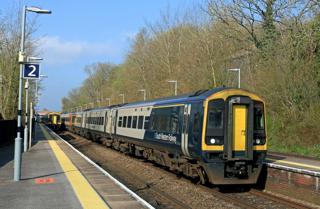
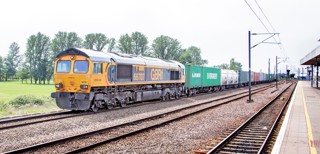
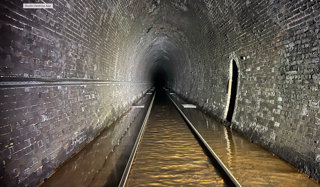
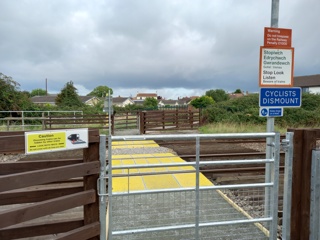
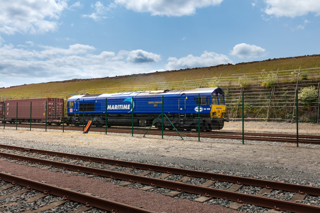

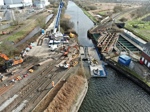







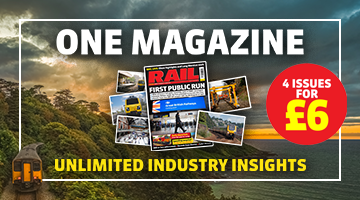

Login to comment
Comments
No comments have been made yet.